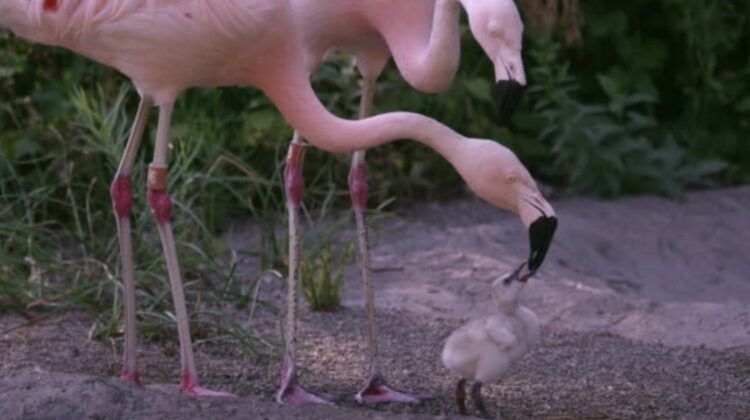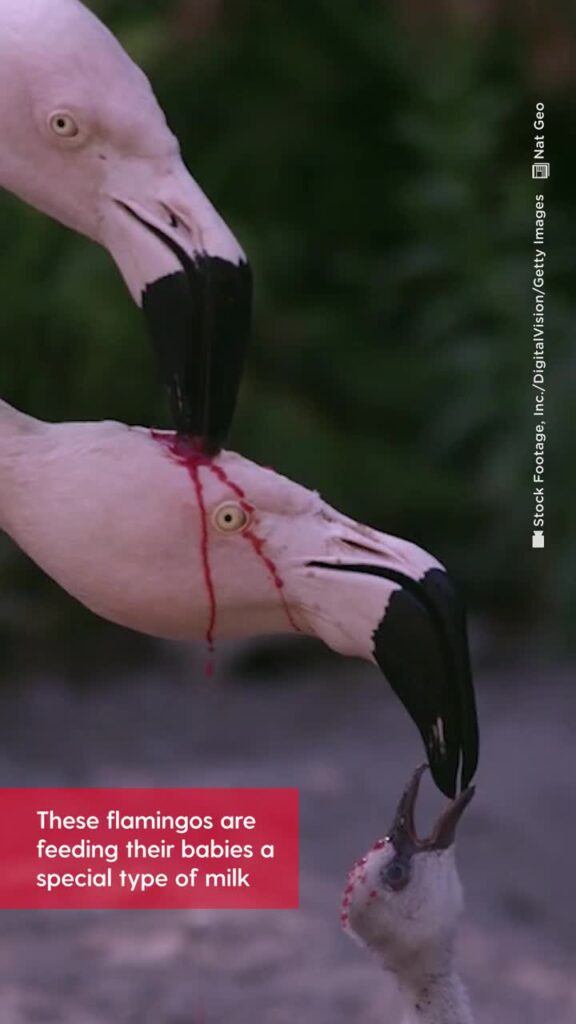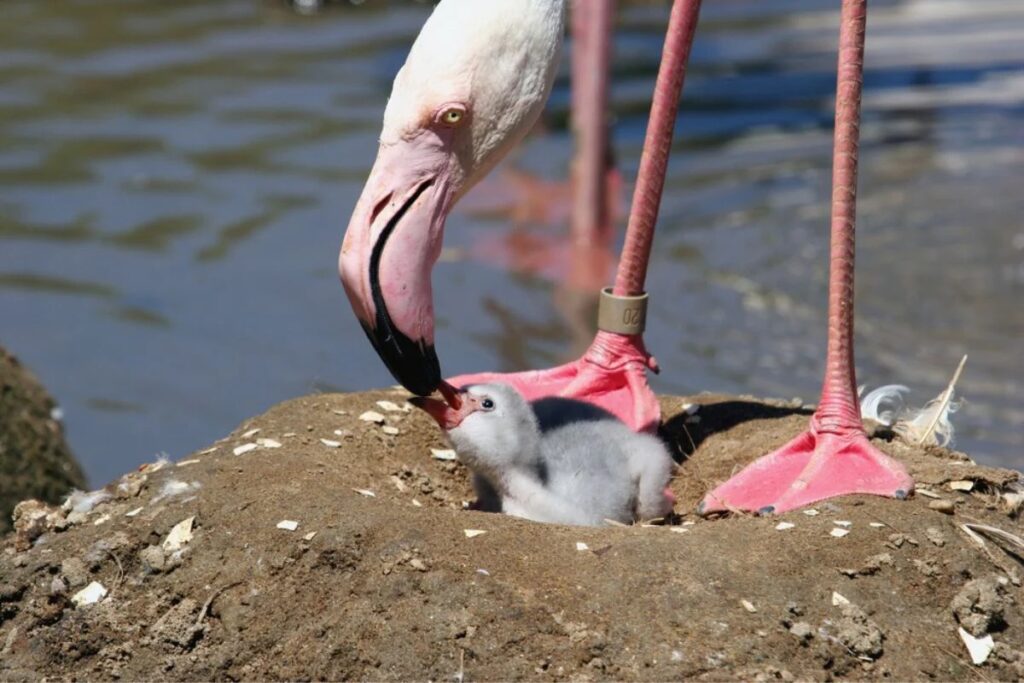
Flamingos are a majestic bird species known for their distinctive pink plumage and graceful movements. They are also known for their unique feeding habits, which involve the secretion of a substance known as crop milk. While some people might mistake this secretion for blood or assume that flamingos are engaged in aggressive behavior when they regurgitate this substance, the truth is far more fascinating.

Crop milk is a nutrient-rich substance that is produced by both male and female flamingos. It is not actually produced in the mammary glands, as is the case with mammalian milk, but rather in the lining of the upper digestive tract. This is why it is sometimes referred to as “pigeon milk,” as it is also produced by some species of pigeons.
The purpose of crop milk is to provide nourishment for the flamingo’s young chicks. Unlike many other bird species, flamingos do not immediately begin feeding their chicks insects or other solid foods. Instead, they rely on crop milk as a primary source of nutrition for the first few weeks of the chick’s life.

When a flamingo regurgitates crop milk, it is a sign that the chick is hungry and needs to be fed. The chick will place its beak into the adult’s mouth and consume the milk directly from the crop. This is an important bonding experience for the parent and chick, as it helps to establish a strong relationship between them.
As for the color of crop milk, it can vary depending on the species of flamingo. In some cases, it may appear yellow or white. However, in most species, it has a reddish-pink color that is often mistaken for blood. This is because the milk contains high levels of carotenoids, which are pigments that give flamingos their distinctive pink coloration.
In conclusion, while it may be easy to mistake the secretion of crop milk in flamingos for blood, it is actually a vital part of their reproductive and parenting process. This nutrient-rich substance is produced in the lining of their digestive tract and is regurgitated in order to feed young chicks. Understanding the unique feeding habits of flamingos helps to shed light on their remarkable biology and behavior, and reminds us of the many fascinating adaptations that have evolved in the natural world.

Leave a Reply